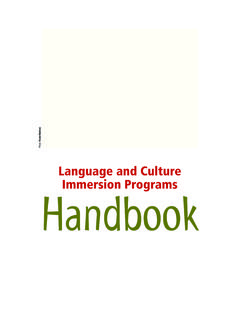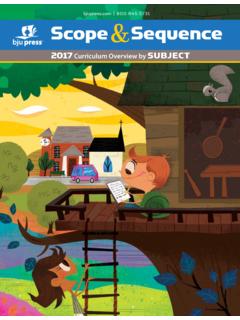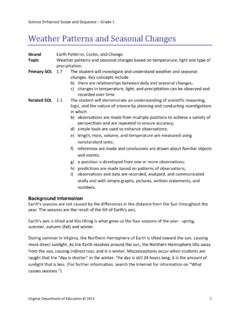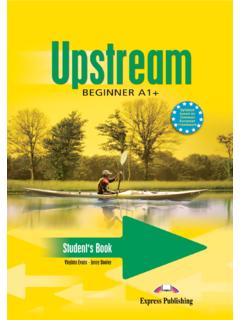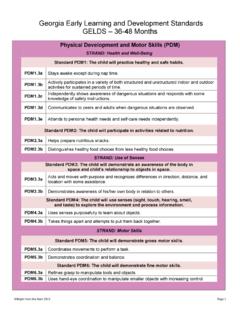Transcription of A CHILD’S PLACE
1 A CHILD S PLACE DAILY SCHEDULE 7:00 9:00 FREE PLAY Children choose from a variety of different activities available in the classroom: block building, manipulatives, puzzles, dress up, water or sand play, drawing, or painting. They initiate their own play, either alone or with other children. They learn how to work independently, take turns, share, and play cooperatively with others. 9:00 9:30 CIRCLE TIME Children sit together and the teacher initiates a conversation about topics such as the weather, the calendar, the seasons, a field trip, or an upcoming holiday. Sometimes she leads a discussion about a special theme or group project. The children learn concepts of time and space and gain new vocabulary words. 9:30 10:00 STORY TIME Children gather together in a comfortable corner of the room to listen as the teacher tells a story or reads from a book. They look at the illustrations and discuss them. The teacher asks questions about the story, helping children to learn to predict what will happen what will happen next.
2 She encourages them to think about the characters and plot and to use new vocabulary from the story. 10:00 - 10: 20 SNACK TIME As they eat, preschoolers learn social and practical skills: how to set the table, to carry on a conversation, learn table manners, etc. 10:20 11:00 LEARNING TIME During this time, children participate in a teacher directed writing, language, math, art, or science project geared towards problem solving or deductive reasoning. They will practice new skills, develop fine motor control, learn how to communicate with ideas and needs effectively, and how to work together as a team. 11:00 11:30 OUTSIDE TIME (weather permitting) Climbing, running, jumping, bouncing balls, swinging, crawling through tunnels, organized games (soccer, basketball, tag, football, etc.) helps children develop large muscle control, motor coordination, and balance. 11:30 12:00 INDIVIDUAL TIME Children get to choose from different learning areas like the library, computer area, puzzles table, etc.
3 Allowing time themselves. 12:00 12:45 LUNCH Lunch is served in family style . Children practice good table manners, and naming, passing and serving food. Children also learn what is considered appropriate and inappropriate table discussions. A CHILD S PLACE DAILY SCHEDULE (continued) 12:45 2:30 REST TIME It s rest time for the children. Children lay on their mats and sleep so they can continue with their busy afternoon. Children who do not need to rest are offered quiet activities to do during this time. 2:30 3:00 WAKE UP TIME Children are awakened. After they put their bedding away, children put their shoes on, learn how to tie shoe laces and pick a book from the library area so that the teacher will read to them. 3:00 3:20 SNACK TIME As they eat, preschools learn social and practical skills: how to set the table, to carry on a conversation, learn table manners, etc. 3:20 4:00 GROUP TIME During the time, children may learn a game or dance.
4 They may practice in making up a story, preparing a meal, participating in an indoor game. They practice new skills, develop fine and large motor skills, learn how to communicate their ideas and needs effectively and how to work together as a team. 4:00 4:45 OUTSIDE TIME Climbing, running, jumping, bouncing balls, swinging, crawling through tunnels, organized games (soccer, basketball, tag, football, etc.) helps children develop large muscle control, motor coordination, and balance. 4:45 5:45 FREE PLAY Children choose from a variety of different activities available in the classroom: block building, manipulatives, puzzles, dress up, water or sand play, drawing, or painting. They initiate their own play, either alone or with other children. They learn how to work independently, take turns, share, and play cooperatively with others. 5:45 6:00 CLEAN UP As they clear the table or put away the blocks and tows, children learn how to plan, organize and work with others.
5 SPECIAL EVENTS: There will be occasional variations in the daily routine for class programs related to special interests, such as visitors like police officers, firefighters, or doctors will also come to the classroom occasionally. Sometimes we will have concerts, magic shows, plays, clowns, pony rides, pet-a-pet farms, puppet shows, special lunches, and pictures taken.
